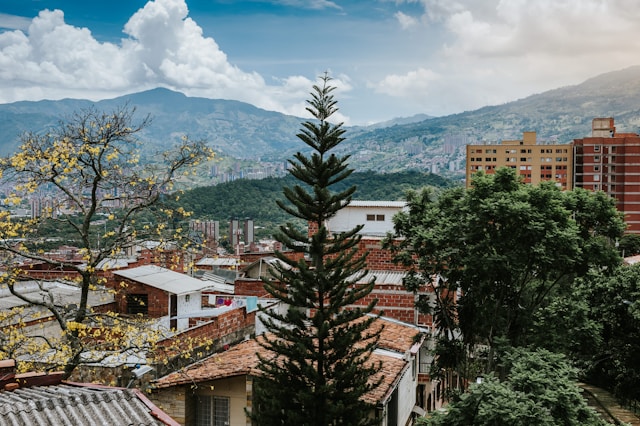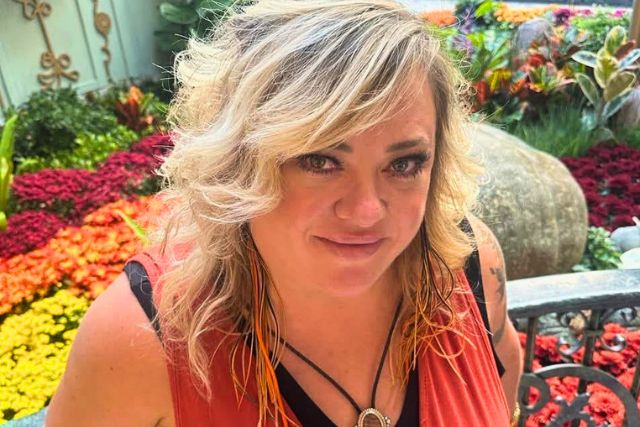Journalist Jennie Erin Smith spent years in Colombia following a researcher and local families who shared a gene for early-onset Alzheimer’s. She tells the story in her new book, Valley of Forgetting.
Award-winning journalist Jennie Erin Smith spent seven years in mountaintop communities and laboratories in Colombia researching her nonfiction book, Valley of Forgetting. It follows the lives of a number of Colombian families who carry the “paisa mutation” of a particular gene called presenilin 1, or PSEN1. This mutation is linked to a near-guarantee of developing early-onset, autosomal dominant Alzheimer’s, a form of the disease that begins in a person’s 40s or 50s.
Smith follows not only the groundbreaking research led by Dr. Francisco Lopera and his team, but also the everyday lives of those facing a devastating genetic destiny, often with limited support and resources.
In this conversation with Being Patient founder Deborah Kan, the writer reflects on how the community has shaped Alzheimer’s science, from participating in prevention drug trials to helping researchers identify outlier genetic cases that could point to future treatments. She also explores the emotional complexity of living with genetic risk, the evolving relationship between families and science, and what she learned from caring communities.
Being Patient: A lot of people were aware of this village in Colombia because it got a lot of press attention. Tell us a little bit about your journey. Why did you choose to write a book about them, and how did you hear about this?
Jennie Erin Smith: I was sitting with a friend in Florida one Sunday evening watching 60 Minutes, and I believe [the episode] was titled “The Alzheimer’s Laboratory,” and it told the story. And the story has been told many times before and since, of a family that carries a mutation on the presenilin 1 gene, that’s unique to them, that, like other forms of early-onset Alzheimer’s disease, can give people memory symptoms starting in their 40s or even sometimes 30s. But the difference with this family is that it’s on an order of magnitude larger than any other early-onset Alzheimer’s disease family in the world.
This population was discovered in the 1980s [by] Dr. Francisco Lopera, who died last year, was this pioneering Colombian neurologist who got out to these hillside farms. He was in a public hospital in Medellín, Colombia, in the city, and patients started coming in. The first patient came in in 1984 with [what was then called] senile dementia. They didn’t call it Alzheimer’s at the time — they didn’t in that clinic — because they didn’t have the brain evidence to diagnose Alzheimer’s.
The thing that was special about Dr. Lopera is how not lazy he was. He got out to the remote countryside and started noticing patterns. He got the idea that this disease had been in the region for quite a long time, and that there were probably many others affected. But the real, true magnitude of the family, the fact that there are 6,000 people in this family — not all of them are carriers of the gene — that took a while to understand. And he also realized the importance of having this population to study before they became ill.
Back in the early 2000s, he began launching natural history studies of these folks. If you’re in this study now, your parent and grandparent were probably also in this study. This is a very, very long-running cohort, and a lot has been learned from these Colombian families.
“The thing that was special about Dr. Lopera is how not lazy he was. He got out to the remote countryside and started noticing patterns.”
Being Patient: Do the families have a name for Alzheimer’s that’s different? Did they know that it was genetic, since it was being passed through so many generations?
Smith: Yes and no. They had all kinds of names for it. This disease occurred in towns, most of them three and four hours from Medellín. [The towns were] very traditional farming villages where literacy rates weren’t that high. There might not have been a school. Most people in their 60s and 70s from this region have not gotten past second grade.
There were different words for it, but more than anything else, it was not seen as a unified phenomenon. A lot of times a curse was blamed for it, or people blamed a priest, because apparently priests issued curses as well in rural Colombia, which is a scary thought. People commonly ascribed it to witchcraft.
But as far as describing it, they didn’t describe the whole continuum of the disease, which can start with behavioral symptoms, changes in personality or weird behavior that’s inexplicable. That can progress to memory symptoms and then motor symptoms and stuff like that. Sometimes they would describe the person in the first phases of the disease as “crazy” — that was a very common way to describe it. And then in the last phases of the disease, they would describe that person as “crippled.”
The idea that it was one continuum, one biological phenomenon, that it had a name — that didn’t really come until Dr. Lopera and his team started working with them.
Being Patient: Did Dr. Lopera come to understand how this gene evolved within this family?
Smith: That’s a fascinating story in itself, and I do tell that story in the book. There was always a lot of curiosity and a lot of speculation about where this particular genetic mutation had come from. Because first, it was unique to this family — that was known since the 1990s — and second, the family members tended to be white, rural people, which gave rise to the idea that this had to have come with the Spanish conquistadors.
Many people migrated to the New World between, let’s say, 1500 and 1900, so it didn’t necessarily have to have come with a conquistador, but it did likely come with someone of European descent. Later on, in about 2014, a group led by Ken Kosik, who’s an Alzheimer’s researcher, molecularly traced it to Spain. So that sort of ratified the idea that this might have had a romantic origin.
As far as how long it’s been in these hillsides, the actual cases have been traced back to the early 1700s through church records. And the people who were doing that were interns under Dr. Lopera. One was a young girl who was an undergrad, and she was the one who found four women who were basically colonists, farmers in those hills in the 1740s, and each of them had had a lot of children. All of a sudden, she had the explanation for how this mutation spread so quickly over such vast terrain. They’ve done a lot of work on that.
Being Patient: Tell me about how Dr. Lopera’s research evolved with this community. Tell me a little bit about the research from its inception up until now.
Smith: So I consider this sort of a miraculous project because of the state that Colombia was in in the 1980s and ‘90s, when Dr. Lopera first started this project. I just told you about the first patient that he saw in 1984. He and his colleagues went out to those families, did some work and published a paper in 1987 with pretty much everything they knew about them at the time and their suspicion, which was not yet confirmed, that there was a genetic cause.
In that same year that that paper was published, there was a huge attack on Dr. Lopera’s university by right-wing paramilitaries linked to drug cartels. They were killing anyone that they suspected of leftist sympathies. A lot of doctors at the public university had leftist sympathies or were accused of such. All of a sudden, Colombia became a really dangerous place for Dr. Lopera. He and several of his colleagues left the country. He ended up in Belgium for several years, then came back in the ’90s, when things had calmed down just a little bit.
The miracle part to me is that all of this didn’t just get lost. He had brought his genealogies of the families with him to Belgium, and he couldn’t interest anyone in them.
When he came back, the Colombian conflict, which pitted left-wing guerrillas against paramilitaries against the state, created absolute chaos in the countryside. A lot of people who’d been living in these villages, whose families had roots in these villages for 200 to 300 years, started coming into the city. When they started coming into the city, they started coming into his clinic. That was when this study really busted open — when all of a sudden, they weren’t just from that one little town. They were from five different towns.
Those were the first patients, and this was the 1990s, whose brains he was able to study, because he started a brain donation program. And that’s when they found the actual gene.
This study also almost died in the early 2000s. They had the gene, they had published a lot of research, [but] they’d run out of money. Also, it wasn’t a very good time in Alzheimer’s drug research. There just wasn’t a lot going on. But all that changed in the early 2000s when the anti-amyloid drugs began being invented. Banner Alzheimer’s Institute in Phoenix, Arizona, and Genentech started working with Dr. Lopera on the idea of a prevention trial for Alzheimer’s disease, trying to intervene before people became sick.
They had this large Colombian population that had been meticulously studied for many years. So who better to try that concept with than this population? But logistically, it was a hellish prospect — another miracle.
Being Patient: What did we learn from that drug trial? Tell me a little bit about what that trial was like from their perspective, and also what came from it. Where are we now in terms of looking at this specific population?
Smith: Sadly, the whole 6,000-person cohort, or all the mutation carriers in the cohort, were not enrolled in this trial. It was a few hundred people who met the right criteria of age, how close they were to the disease, [whether] they met the baseline requirements, and if they didn’t do drugs. There were a lot of exclusion criteria for who could participate.
This was a long trial. This started in 2013 and it went through 2022, and the drug did not show efficacy. I was there the day that Dr. Lopera had to tell everybody that.
I think that for most of the participants, the trial was a good experience. They were able to do something sort of active about their disease, and they had a lot of interaction with the world as a result of this trial. These were people who might not have gotten on a plane to go to Phoenix or to go to Boston. They were well aware that the eyes of the world were upon them, which is very interesting.
And this gets into a whole other question: Is early-onset Alzheimer’s disease a good model for late-onset Alzheimer’s disease? They’re not studying these folks necessarily to create cures for genetic early-onset Alzheimer’s disease. The hope is that whatever is learned from them will be applicable to late-onset Alzheimer’s disease, and the jury’s still out on all that.
“And this gets into a whole other question: Is early-onset Alzheimer’s disease a good model for late-onset Alzheimer’s disease?”
But in terms of what was learned — a lot was learned in the course of that trial. Even though the drug didn’t work, a ton of studies were done on measuring tau in the brain.
One of the things that’s fascinating that came out of all this was the discovery of outlier cases. When you have a mutation like what we call the Paisa mutation — this presenilin mutation that this family shares — the term of art was 100 percent penetrance. If you got this mutation, you were 100 percent going to get sick within a fairly tight range of ages.
But the trial and the money and the genetic studies and the other studies that it occasioned allowed for the discovery of one woman in particular. This was the first case like this to be published out of Colombia, [she] did not get sick until her early 70s. That’s 30 years after the standard for this population.
So she was intensively studied. She was flown to Boston, her brain was studied alive, and then she passed away of cancer, unfortunately. A lot of other work has been done to try and understand the genetic mutations that she might have carried that may have blunted the effects of the Paisa mutation.
We’ve been seeing other cases like that. You guys recently published on one important case out of the United States where somebody is supposed to get sick and doesn’t get sick. As all the anti-amyloid drugs were kind of showing disappointing results, you had hope for another potential pathway of intervention by studying these putatively protective mutations.
“As all the anti-amyloid drugs were kind of showing disappointing results, you had hope for another potential pathway of intervention by studying these putatively protective mutations.”
Being Patient: Do the people in these villages fear Alzheimer’s? Do you have stories that you could share about how they’re facing Alzheimer’s?
Smith: One of the advantages I had, and I think one of the strengths of this particular book, is that it’s not a cross-sectional look at how people are living with the disease. It’s a longitudinal look at how people are living with the disease.
If you come and you stay for a week in Colombia, and you meet ten members of these families who might be caring for someone at home with the disease and might be fearing for their own situation, you can say to them, ‘How do you feel about it?’ And they [might] say, ‘I’m scared. I don’t know if I want to have kids.’ They can say something at that moment. But if you come back to them three years later, they might say something very different.
What I think this seven-year process allowed me to do was be with the families as they lived with the disease and made life decisions around the disease. And the other thing that’s important in this group is that we’re dealing with young people who are getting sick. They’re getting sick in their mid-40s, and their children, who often become their primary caretakers, are in their 20s.
The unique situation here is that most of these families were effectively low-income families. There was no memory care center. There was no help, really. Those young people were in a really particular bind. They were taking care of a sick parent in their home at a time when they themselves needed to be graduating and getting jobs or starting their careers. They were terribly derailed by this disease.
There was one other aspect of this situation that’s unique. At the time that Dr. Lopera began his long-term study, he determined that it was best not to let people know the results of their genetic tests. He knew the results, and those results were available to certain people, but the members of the families did not know.
So not only were these young people navigating a very complicated future — including taking care of a parent, often in their homes with very little money — they didn’t know whether they carried the mutation or not, and they had sort of been conditioned to believe that they didn’t want to know.
But to Dr. Lopera’s credit, over the years he loosened up on that. In more recent years, people have had the option to know and get tested, and the results haven’t been what he feared. He feared people would kill themselves. He feared people would become extremely depressed and that has not happened.
Being Patient: Is there anything that you learned about caring for people with Alzheimer’s with such a big network of families?
Smith: These folks are geniuses at getting through to patients with Alzheimer’s disease. I knew nothing about the disease when I started this work. I didn’t know how to communicate with an Alzheimer’s patient.
I was of this [terrible] idea that an Alzheimer’s patient loses personhood, that they are not who they were. Yes, they are disabled. They’re tremendously disabled. But in my experience with these families, the essential person remains present until very, very late in the disease.
They were able to just penetrate that so nicely and really teach you how to talk. One girl would play songs on her phone to get a laugh out of an uncle, or repeat a name a few different ways. I just learned a lot from them about patience and about how these patients were not lost to them.
“I was of this [terrible] idea that an Alzheimer’s patient loses personhood, that they are not who they were. Yes, they are disabled. They’re tremendously disabled. But in my experience with these families, the essential person remains present until very, very late in the disease.”
Being Patient: It’s very hard to participate in a trial and then see it fail. Is there a lasting legacy of that? Or would you say these families are very open to further participation?
Smith: When I came into this, I assumed that the more education a person had, the more inclined they would be to lend themselves to science, especially if you have a disease in your family.
This is a rural population that, on some level, became an urban population, and people got more education as the generations went on. The older generations were quite enamored of Dr. Lopera. They would have done anything for Dr. Lopera. He was the only one to get on a horse and come out and see them in the ’80s and ’90s [and] when there was warfare in their towns. He really stuck his neck out for this population many times over, and they appreciated that.
But as the generations have progressed, I believe the people who are now in their 20s have become a little bit cynical, because they didn’t see the drug trial helping their parents, and they hadn’t seen any other type of studies really helping their parents.
That’s not anybody’s fault — that’s how science works. But I have seen among the children of the people who just did the last drug trial, no interest. And occasionally, they’re saying sort of flippant things to the investigators, like, “Call me when you have the cure,” or something like that.
But I do think that they can be won over — just differently. They’ll have to be talked to differently because they’re a different population.
Being Patient: Tell me what you got out of writing this book. What was your biggest takeaway in terms of what you learned and what you will remember?
Smith: I loved this process. I love going down the rabbit holes of the old papers because all science writing depends on papers. And you go through citations, and you find a citation from the ’60s, and that takes you down a rabbit hole. You try to put yourself in the mind of the investigators and learn what they learned.
But really, the friendships with the families have become the most lasting gift of this. I actually came to Colombia before the book came out and gave out copies because I didn’t want it to seem like I had done something here for myself in the United States. We were all kind of part of this effort.
Honestly, it was an honor to work with Dr. Lopera. It was really fun to work with him. I got together with him every third Wednesday of the month and sort of picked his brain, or brought my reporting to him and had him weigh in on it.
When he passed away, I realized what a special experience I’d had. I had no idea that the seven years I would spend with him would be the last seven of his life. And they were not boring years, let me tell you.




